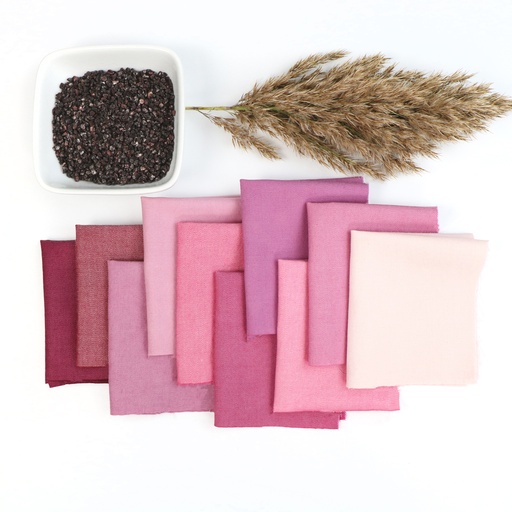Natural dyeing, an ancient craft passed down through generations, can be done at home with simple supplies and kitchen scraps. It's eco-friendly, yielding beautiful results and fostering a connection with nature.

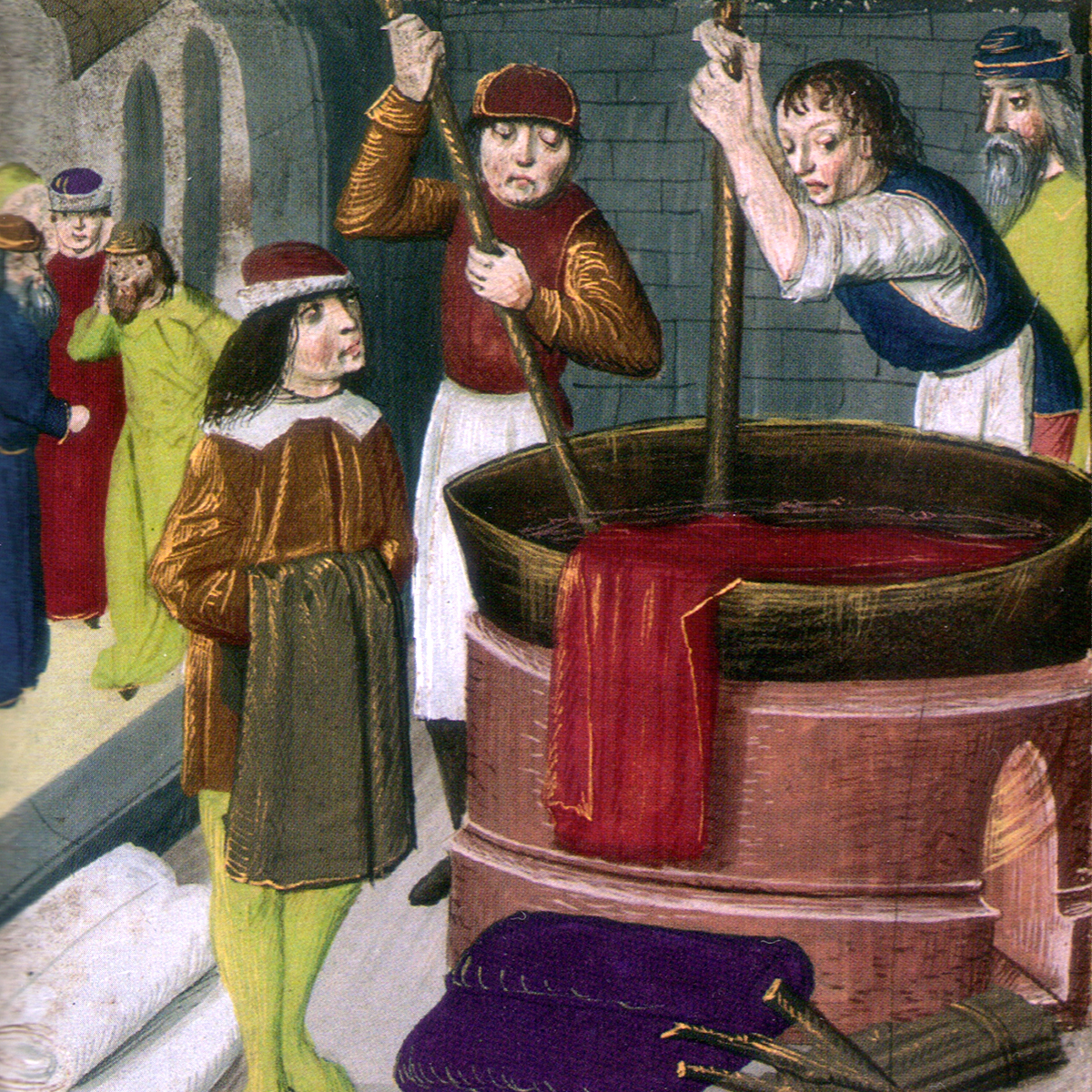
The history of dyeing is not an easy one to trace, as textiles and dyestuffs are perishable. The first surviving evidence of dyeing textiles dates back to a Neolithic settlement. Archeologists have also discovered yellow-ochre and red-brown-dyed textiles in Egyptian pyramids. Once humans developed vessels like pots and bowls, they were able to boil food, which possibly sparked the idea to use similar methods to dye clothing and other textiles.
The market for dyed textiles exploded in Europe after explorers returned from the Americas with knowledge gleaned from Native Americans, who were creating brighter and more vibrant dyes from natural resources. This led to the development of extract dyes, which were transportable and had a longer shelf life.
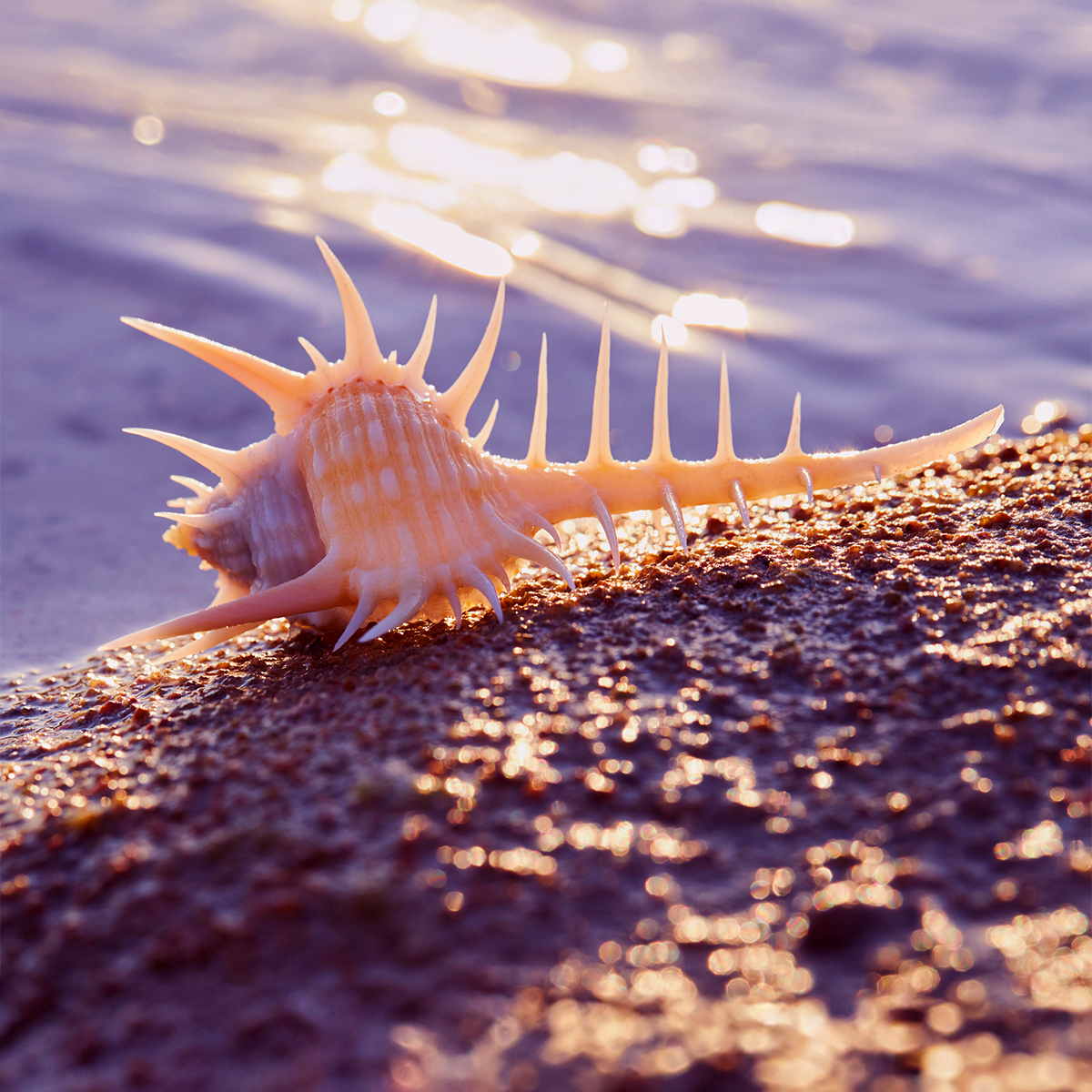
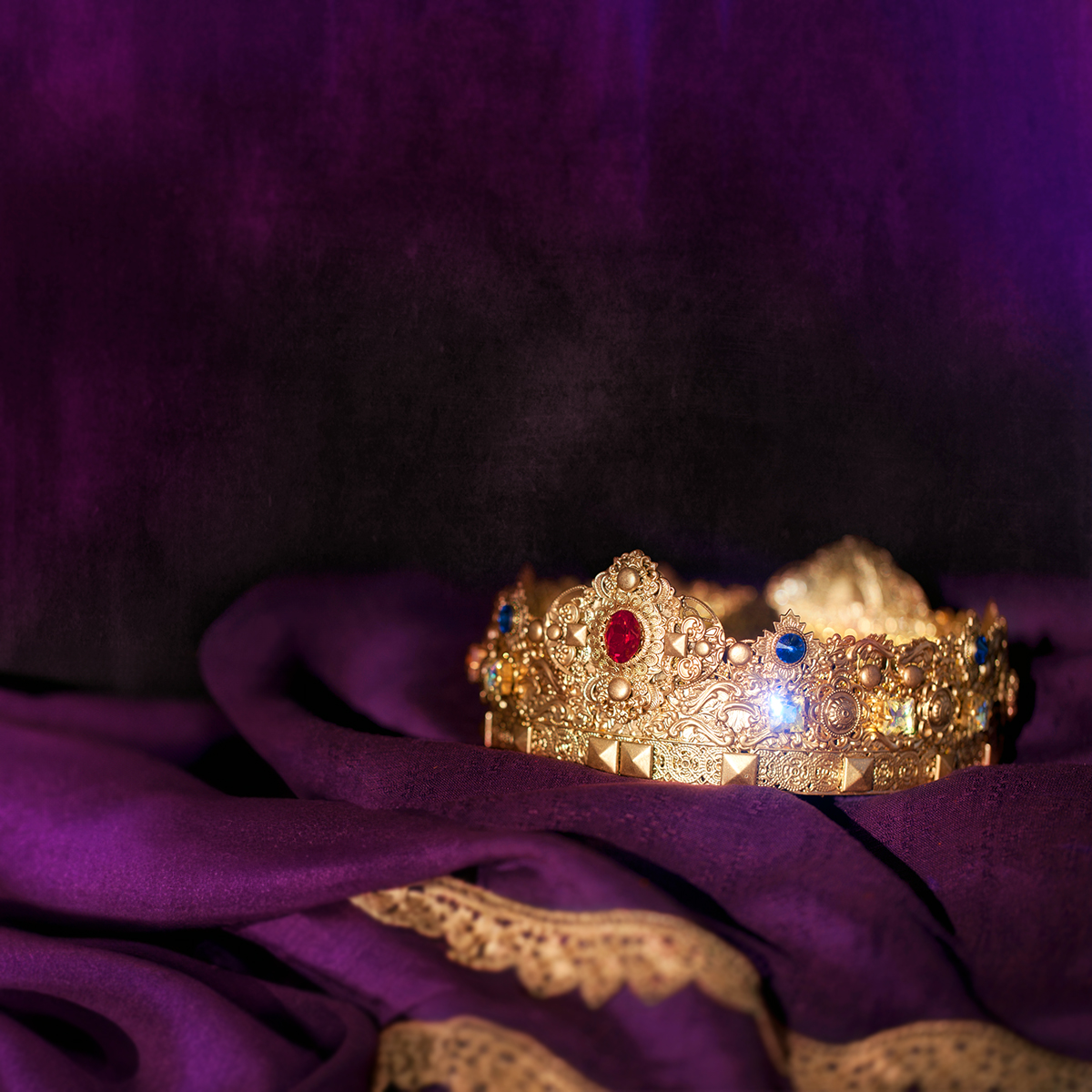
The process of natural dyeing has contributed to the way we perceive colors. In the ancient world, Tyrian purple dye was created from Murex sea snails, with each yielding a single drop of dye. It was so expensive that only royals were allowed to use it, and to this day, purple is still associated with royalty and wealth.
Synthetic dyes were developed in the 1800's, when the red root of Indian Madder was replicated synthetically. Synthetic dyes were cheaper and easier to produce than natural dyes. Soon, clothing factories started to pop up around cities, and mass textile production began to boom into the giant manufacturing industry it is today.
Natural dyes offer a unique charm that is lost in synthetic, man-made dyes. Synthetic dyes only contain a single molecule which deposits a consistent color in one tone. Natural dyes give a more organic appearance with natural change and variation in hue, adding interest to the piece being dyed.

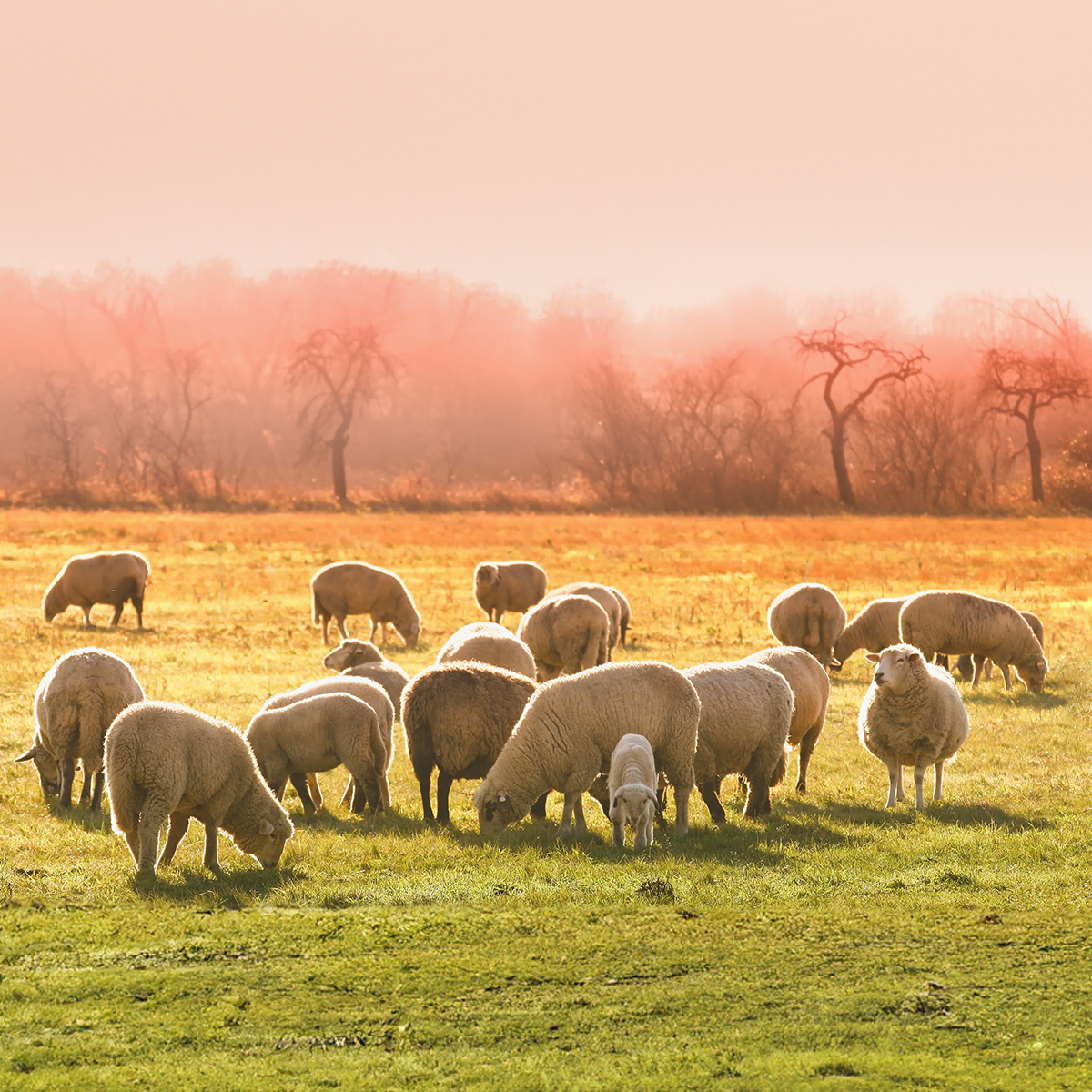
The process of using natural dyes starts with selecting the fiber to dye, which falls into three categories:
- Protein-based fiber from animals or insects like wool and silk, which dye easily
- Cellulose-based fiber from plant cells like cotton and linen, cultivated for centuries
- Man-made textiles include synthetic textiles like nylon and polyester, which are not a good choice for natural dyeing

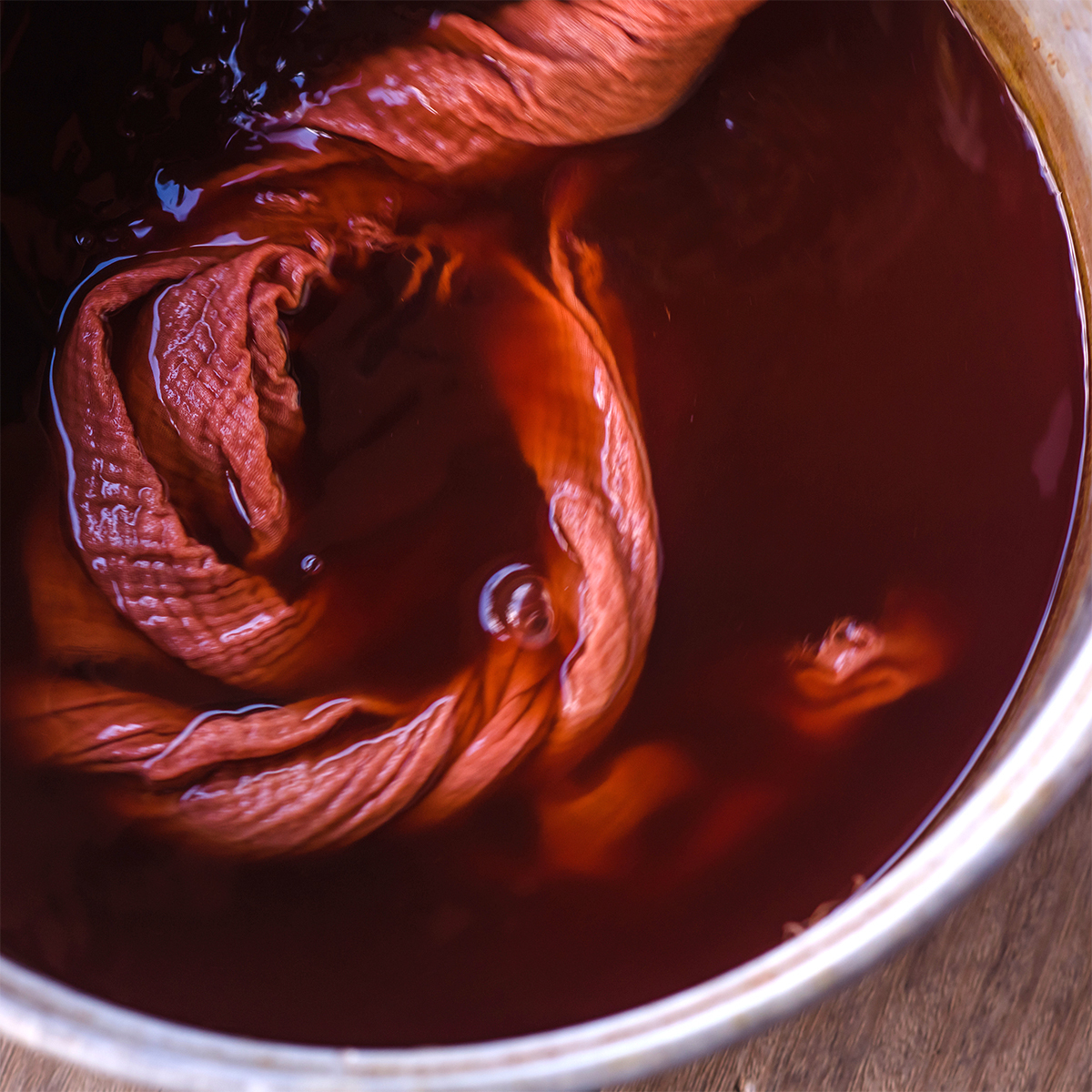
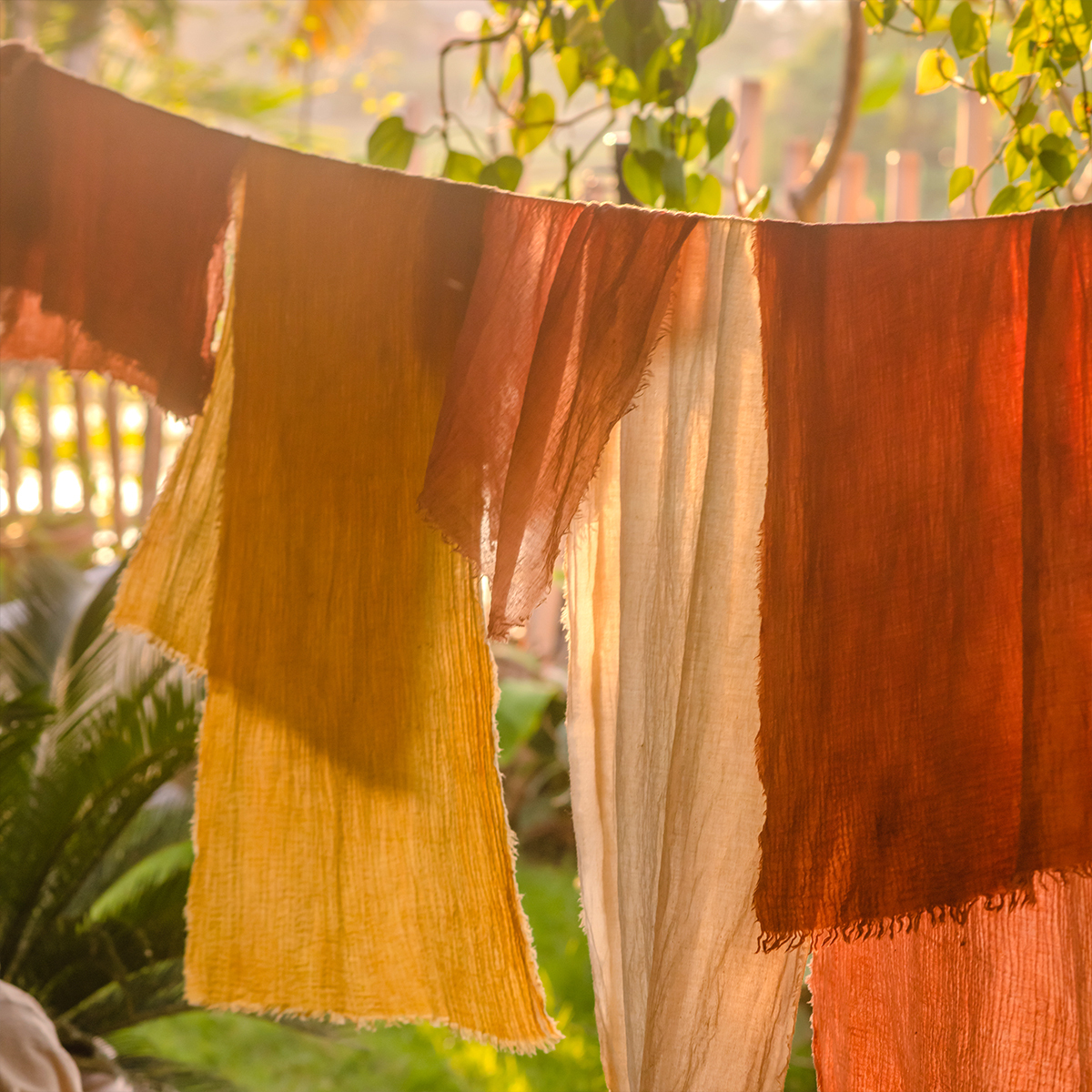
- Begin by immersing your fabrics in a scouring bath to eliminate any accumulated dirt or chemicals from the textile production process. Different agents are added to the bath based on the type of textile for optimal cleansing.
- Next is a mordant bath. This prepares the fibers for dye absorption, enhancing color vibrancy and longevity. While not all dyes require this step, the right mordant can significantly improve natural dye durability. Options include natural mordants like chalk, certain milks, and rhubarb, or metal mordants such as iron, copper, and aluminum, chosen based on the fiber and dye selection.
- Mix the dye according to the dyestuff, fiber type, desired color outcome, and temperature requirements. The process involves adding the textile to the dyebath, adjusting the temperature, and stirring as needed. After heating, let the dyed material rest.
- Once the dyed item has cooled, proceed with washing to remove excess dye, ensuring it is ready for use.

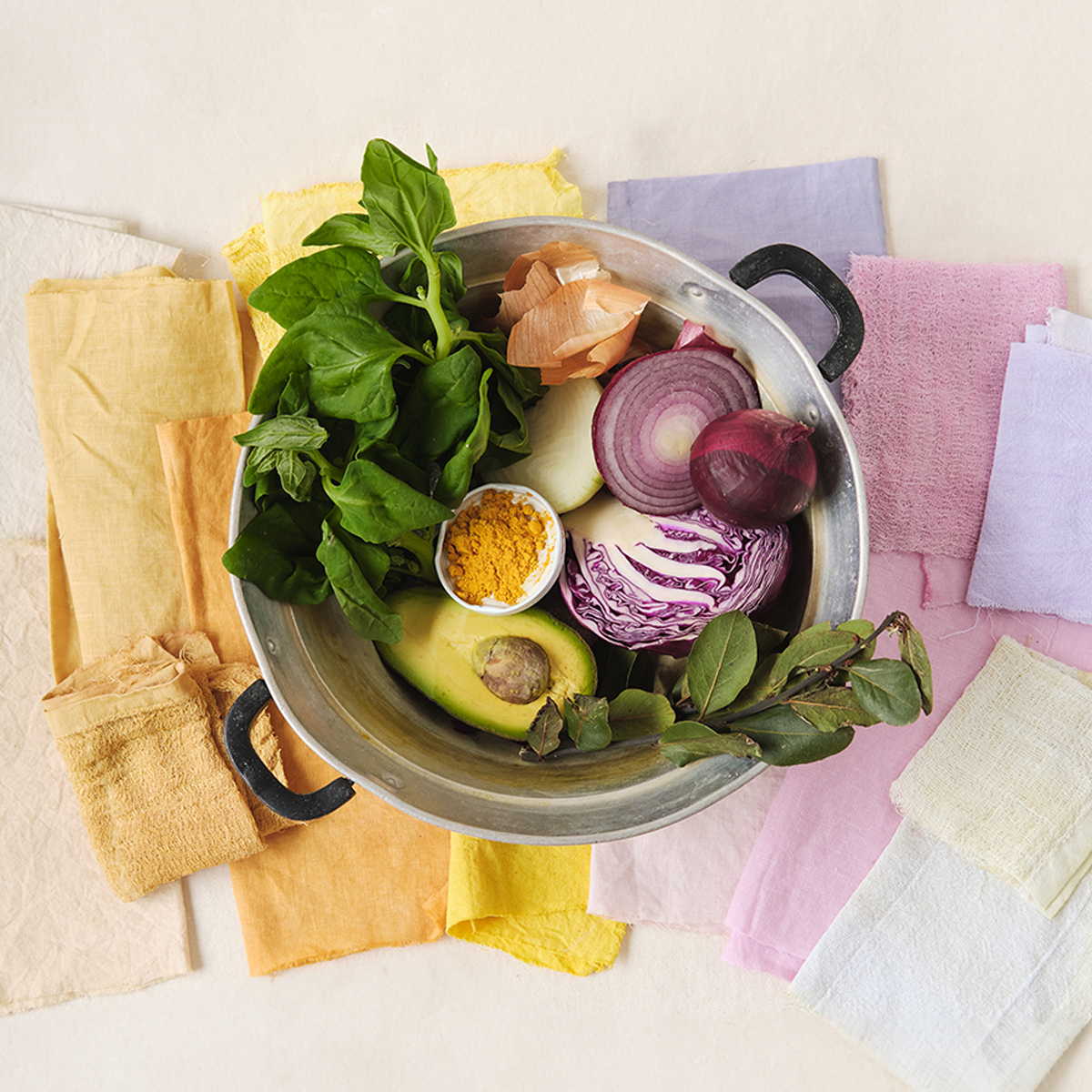
When using natural dyes, there are two options: extracts and whole dyestuffs.
Extracts are super concentrated liquids or powders made from whole dyestuffs. Many dyers like extracts because of their extended shelf life and the possibility of using dyes derived from plants found in other parts of the world.
Whole dyestuffs are plants, leaves, roots, fruits, fungi, herbs, flowers, etc., that can be used to develop dye. These can be grown in a garden, bought at the store, or found in the waste from a home kitchen.
Dye recipes aren't one size fits all, so a lot of experimentation goes into developing the perfect dyebath for the dyestuff that's being used.

Nature provides us with a plethora of resources to use for natural dyeing. Below are examples of common dyestuffs used to achieve a rainbow of color options.
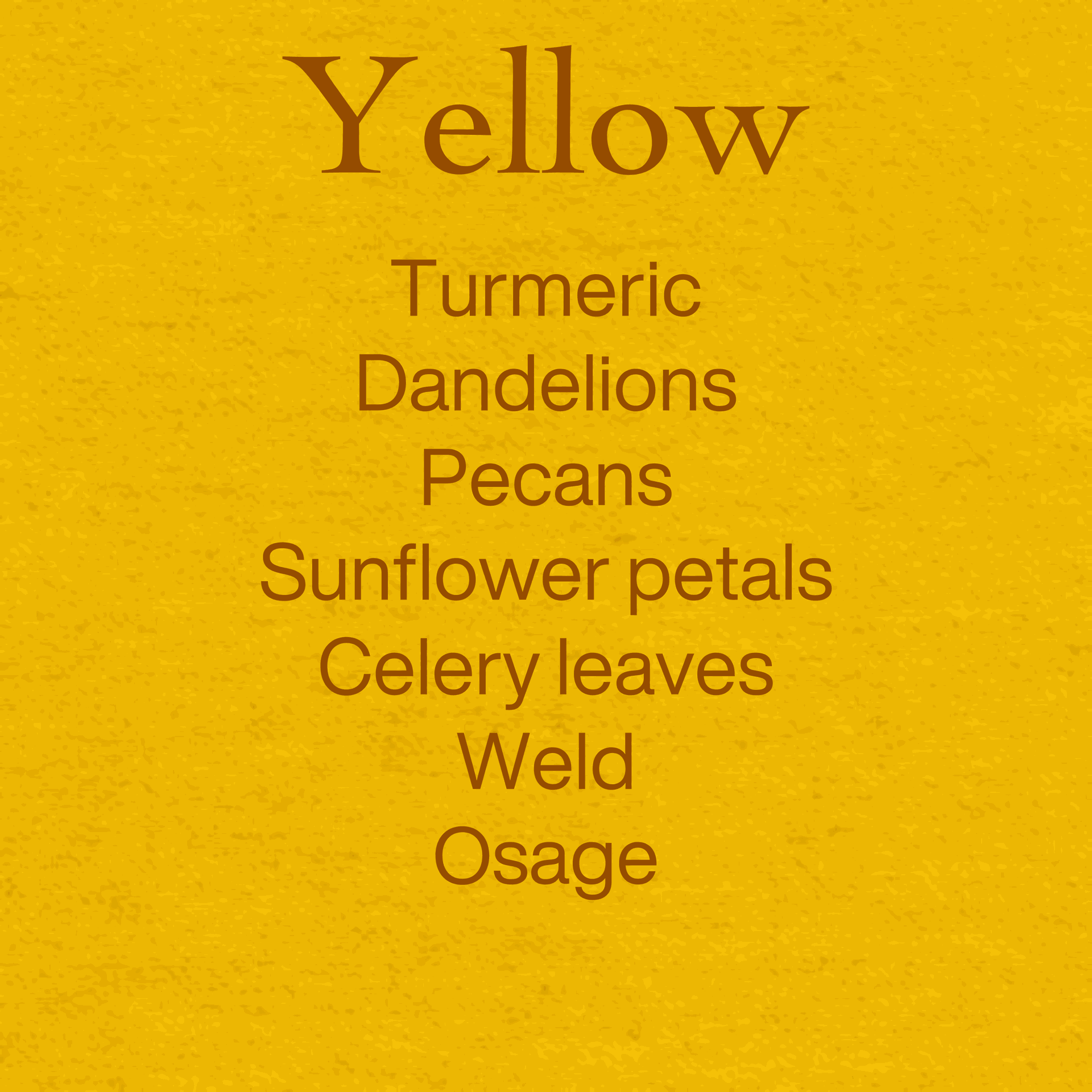
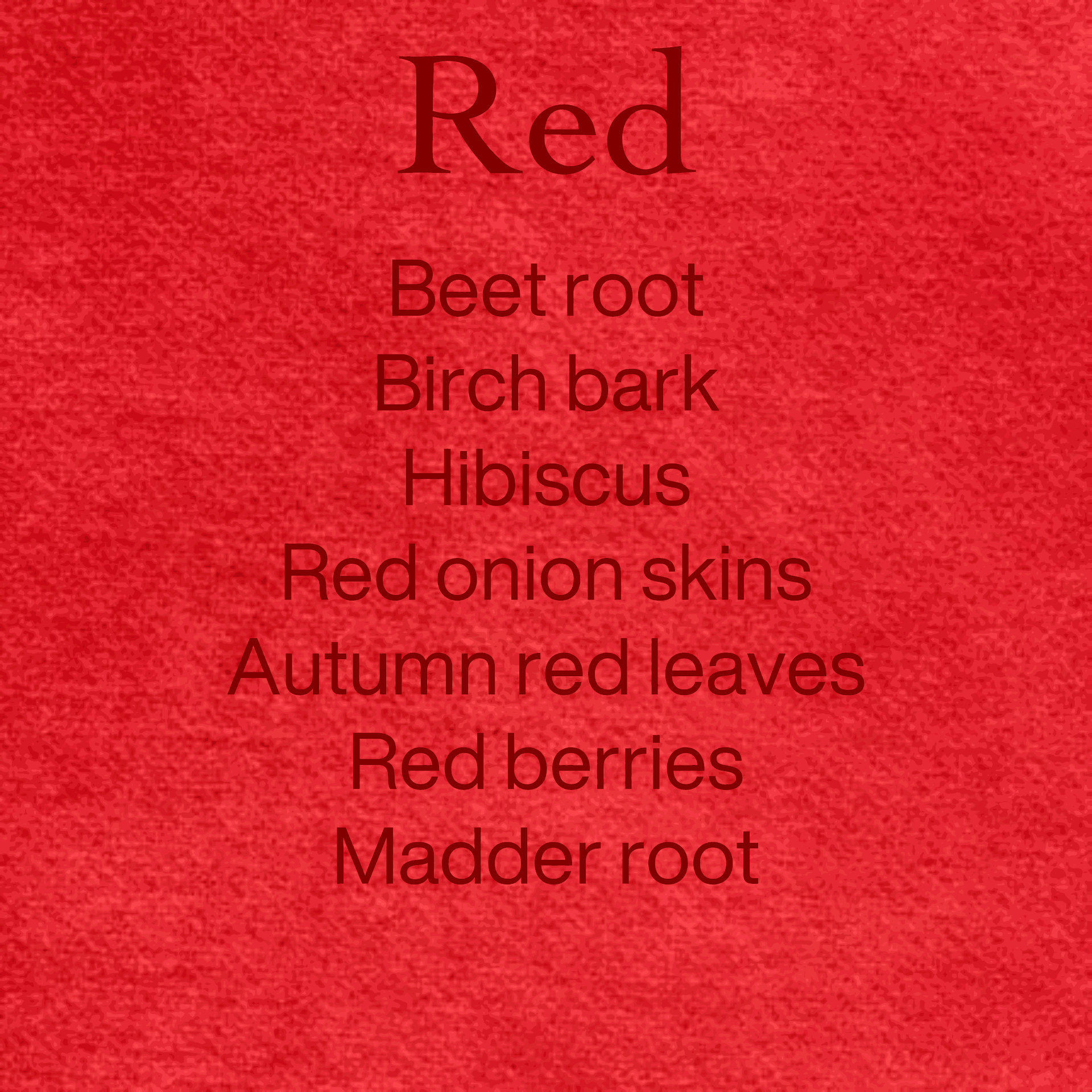
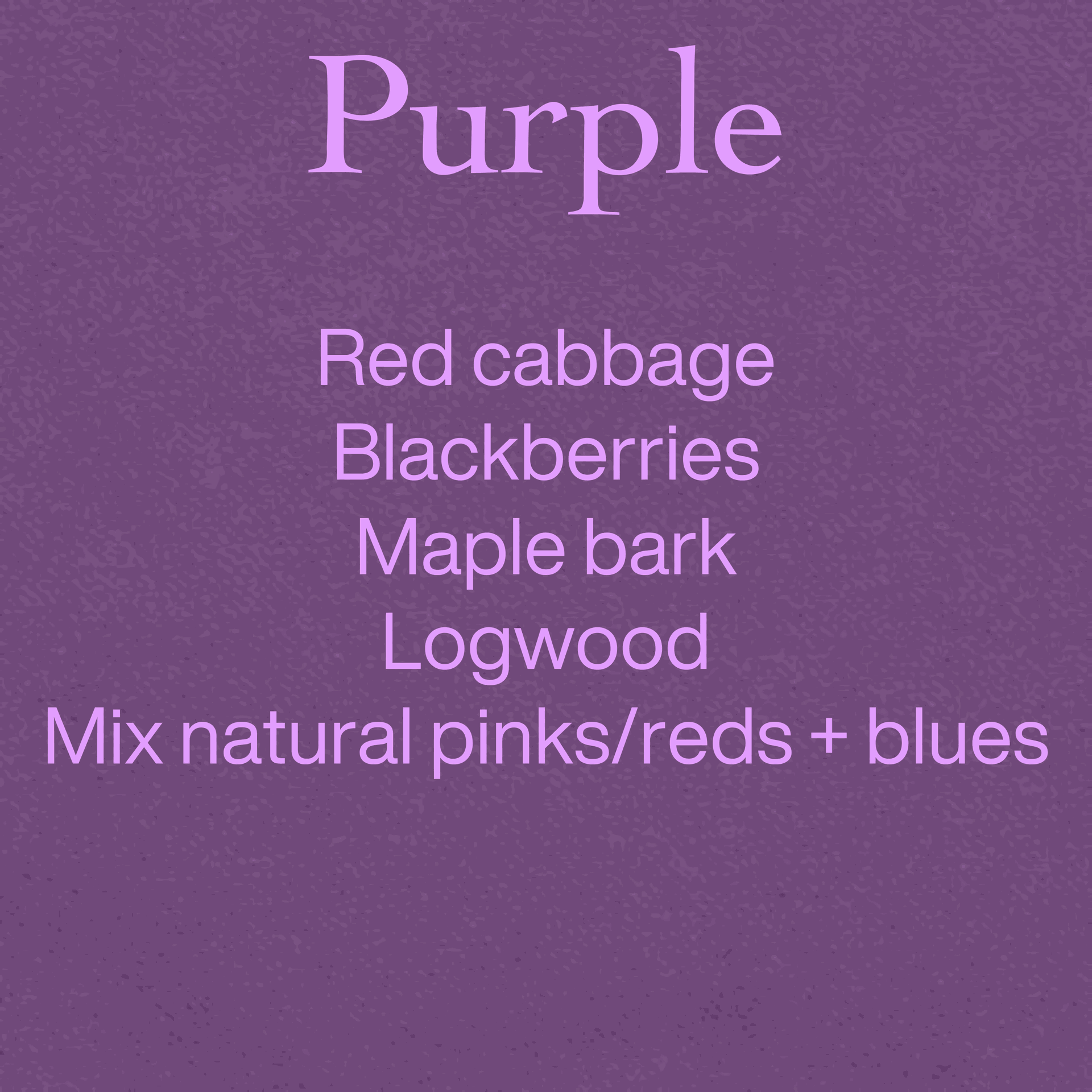
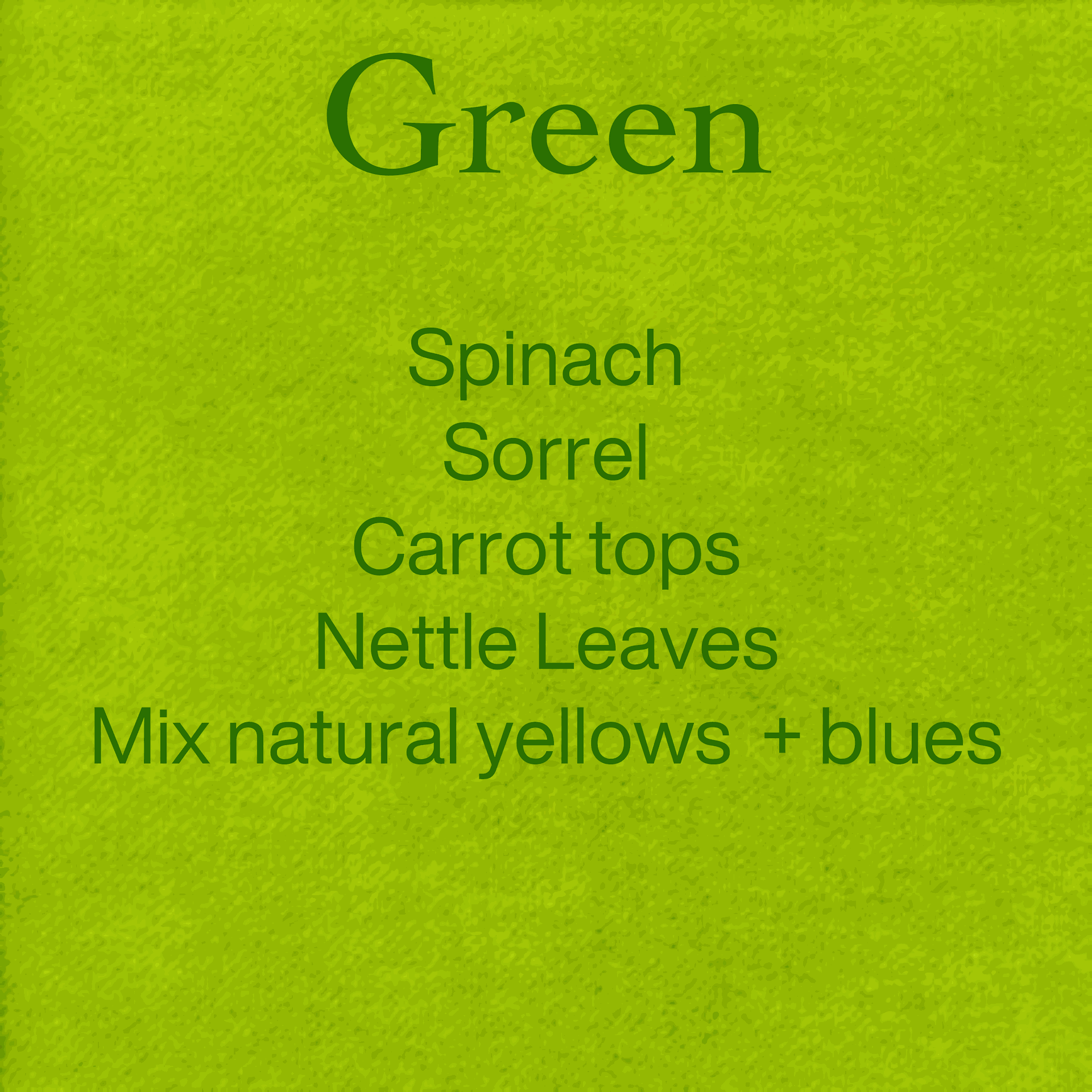
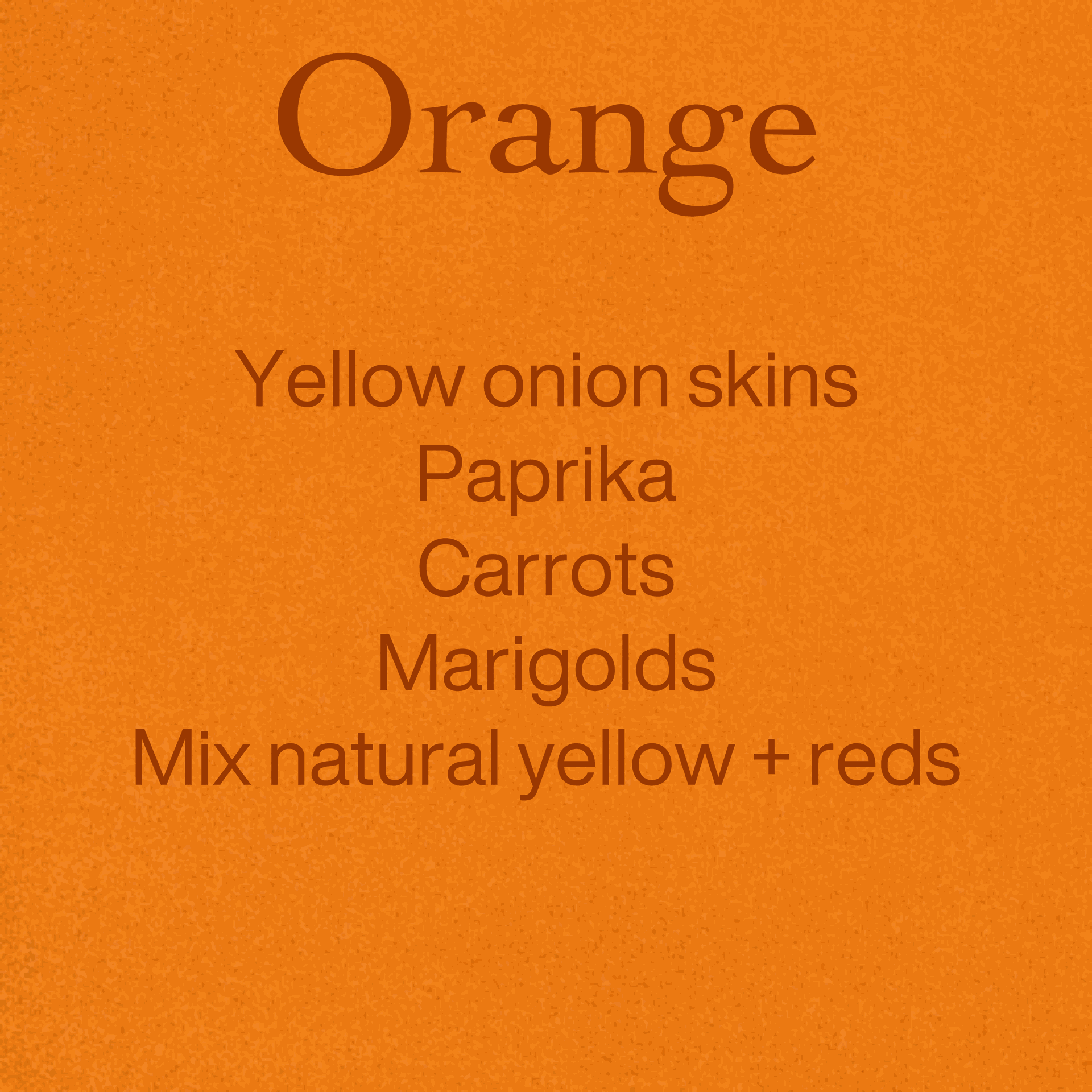
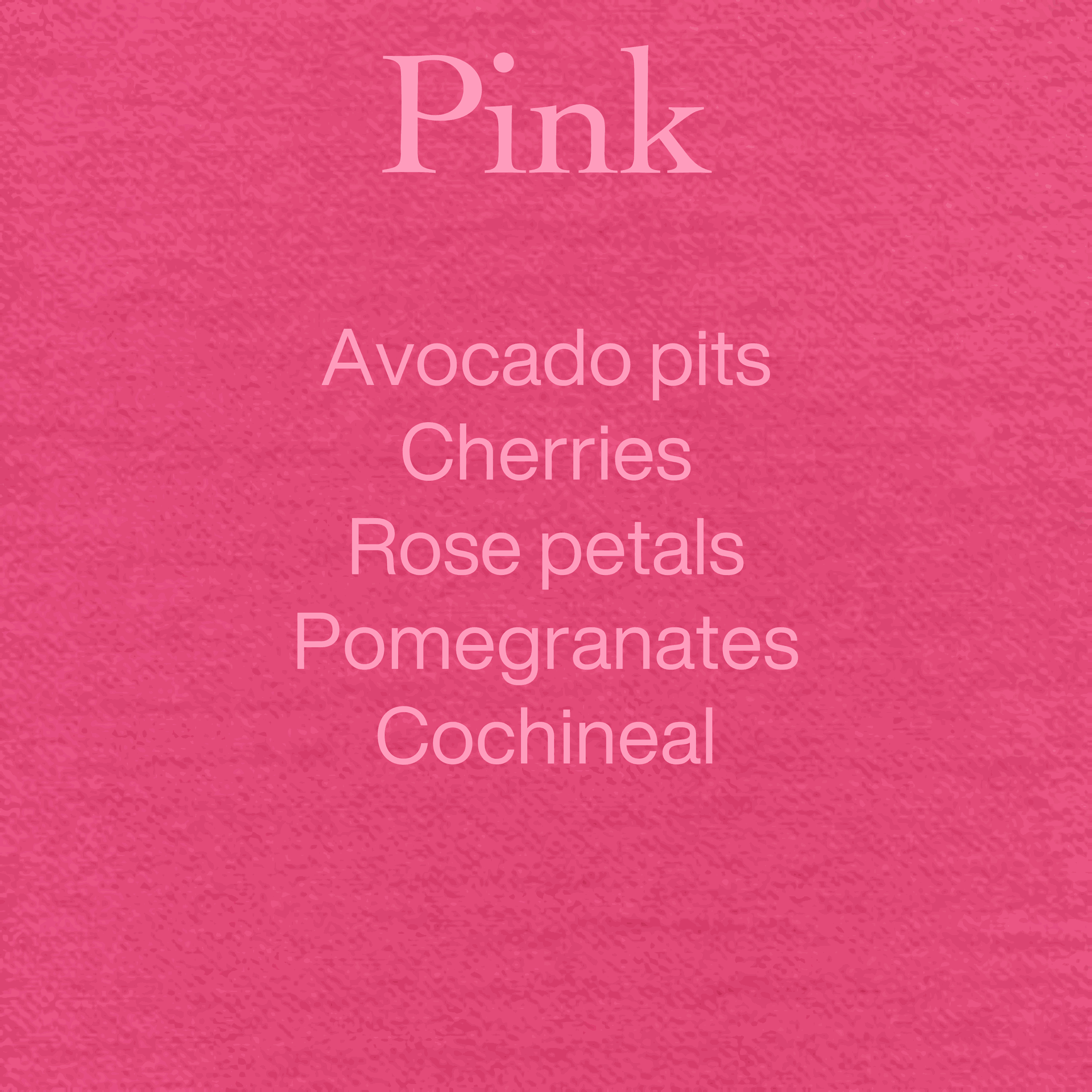
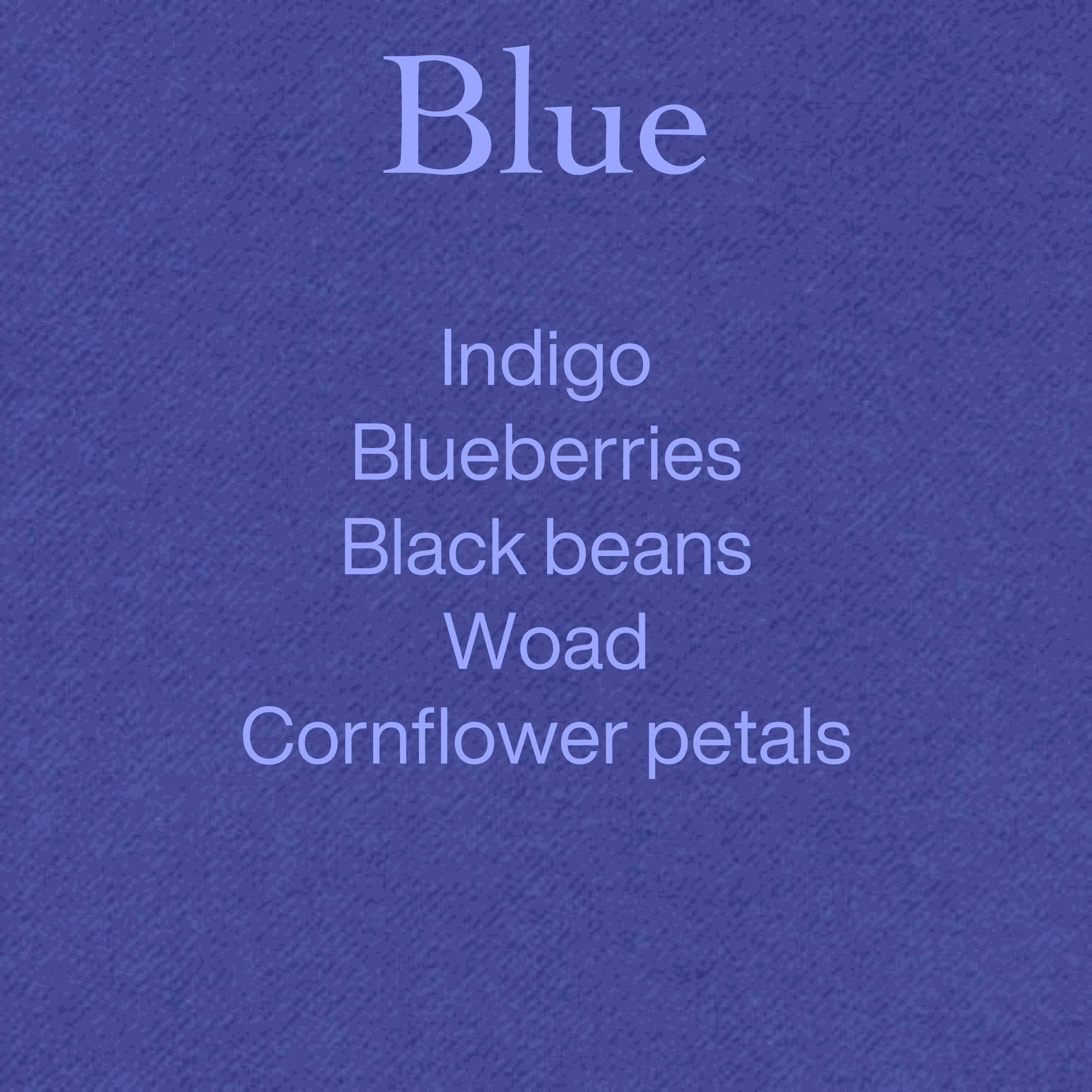
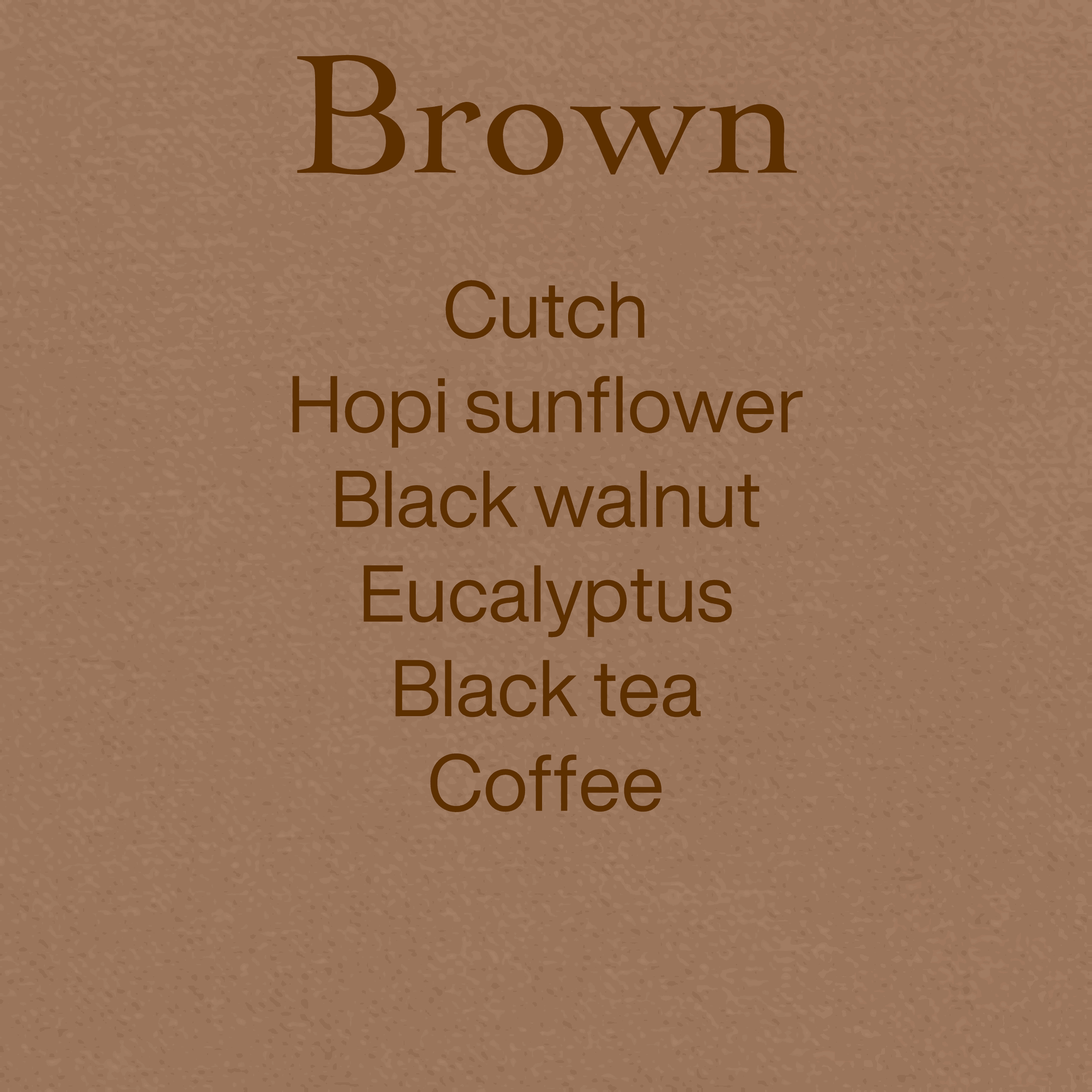

Shop our Hand Dyed Fabrics Page and get started making something beautiful from nature today!
